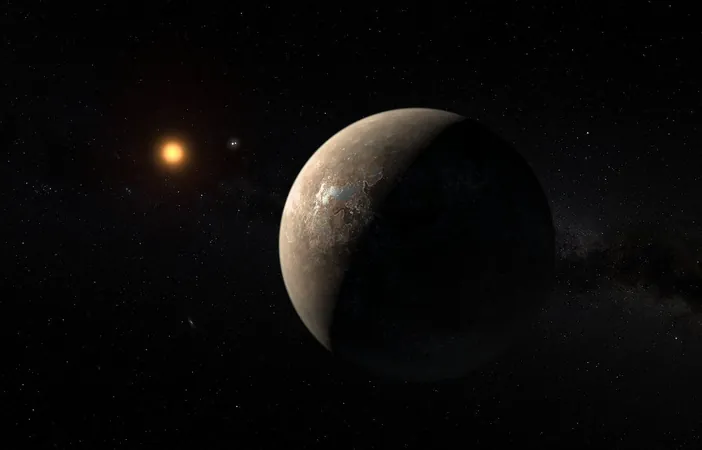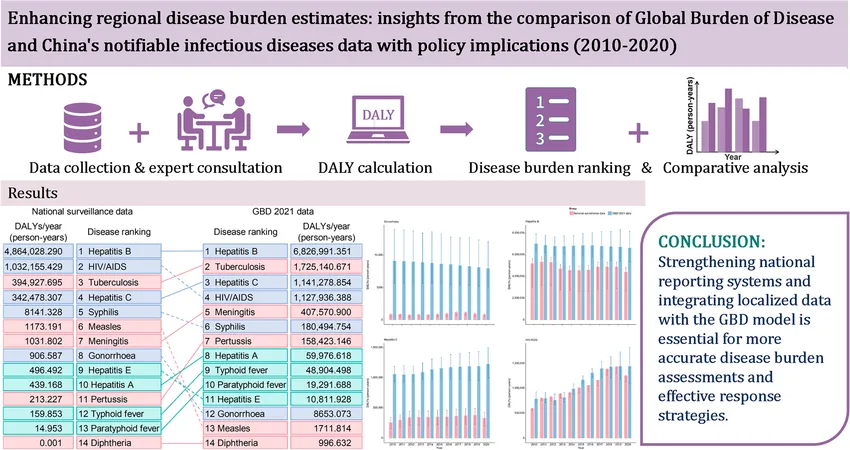
Unlocking the Secrets of Rocky Exoplanets: What the James Webb Telescope Reveals
2025-07-16
Author: Arjun
The Quest for Habitable Rocky Planets
For decades, astronomers have long sought the ultimate prize: rocky planets that could support life beyond Earth. With more than 5,900 exoplanets discovered, only a mere 217 have been confirmed as terrestrial—essentially rocky or ‘Earth-like.’ However, the challenge remains daunting, as gathering reliable data about these planets' atmospheres is particularly tricky due to their smaller sizes and close proximity to their stars.
The Transition to Characterization with JWST
Enter the James Webb Space Telescope (JWST), which is revolutionizing exoplanet studies by shifting focus from mere discovery to detailed analysis. Despite its groundbreaking capabilities, no clear atmospheres have yet been identified around rocky planets, and the atmospheric data gleaned thus far still comes with considerable uncertainty. Researchers from the Max Planck Institute for Astronomy and Johns Hopkins University recently published a study summarizing Webb’s findings and recommending a new approach for atmospheric characterization.
Pioneering Research and Promising Findings
Led by Professor Laura Kreidberg, the study emphasizes that JWST has accomplished remarkable feats in exoplanet research, employing advanced infrared optics that allow for unprecedented observations. "We’ve measured the most precise transmission spectra for rocky planets to date, along with heat emissions from several of them," Kreidberg noted. This pioneering observation has expanded our ability to study cooler planets, now observable down to a heat of about 100 degrees Celsius.
The Impact of M-Type Stars and Atmospheric Formation
Webb's capabilities have driven extensive theoretical models revealing how rocky planet atmospheres can form and evolve, especially those orbiting M-type red dwarf stars—comprising 80% of our galaxy's stars. The researchers have identified various factors that shape atmospheres, from volatile elements introduced by comets to atmospheric loss due to intense radiation—a key concern since it’s unclear how many rocky planets maintain their atmospheres.
Defining the 'Cosmic Shoreline'
A new concept—the 'cosmic shoreline'—has emerged from Webb's data, suggesting that planets with higher masses and lower radiation levels have a better chance of retaining their atmospheres. However, the influence of stellar type and radiation history on this 'shoreline' still remains shrouded in mystery.
Introducing the Five-Scale Height Challenge
To further refine atmospheric detection, Kreidberg's team has proposed the intriguing 'five-scale height challenge.' This initiative aims to achieve the measurement precision necessary to detect Earth-like atmospheric features, with carbon dioxide being the prime target. Current data lacks the resolution to spot such subtle markers, necessitating more observations.
Future Exploration on the Horizon
Thanks to JWST’s expansive capabilities, astronomers are nearing a breakthrough in characterizing rocky planet atmospheres. The potential to detect tiny signals from vital compounds like water, carbon dioxide, and methane marks a significant milestone. Alongside ongoing observational programs, future missions like the Habitable Worlds Observatory promise even more advanced studies of rocky exoplanets orbiting Sun-like stars.
A Step Toward Understanding Life Beyond Earth
The strides made with JWST represent a crucial first step in unraveling the atmospheres of rocky exoplanets. As Kreidberg aptly stated, "We need to learn to walk before we can run this race toward finding biosignatures and understanding life beyond our own planet." The journey is just beginning, and the cosmic mysteries of our universe are slowly coming into focus.


 Brasil (PT)
Brasil (PT)
 Canada (EN)
Canada (EN)
 Chile (ES)
Chile (ES)
 Česko (CS)
Česko (CS)
 대한민국 (KO)
대한민국 (KO)
 España (ES)
España (ES)
 France (FR)
France (FR)
 Hong Kong (EN)
Hong Kong (EN)
 Italia (IT)
Italia (IT)
 日本 (JA)
日本 (JA)
 Magyarország (HU)
Magyarország (HU)
 Norge (NO)
Norge (NO)
 Polska (PL)
Polska (PL)
 Schweiz (DE)
Schweiz (DE)
 Singapore (EN)
Singapore (EN)
 Sverige (SV)
Sverige (SV)
 Suomi (FI)
Suomi (FI)
 Türkiye (TR)
Türkiye (TR)
 الإمارات العربية المتحدة (AR)
الإمارات العربية المتحدة (AR)